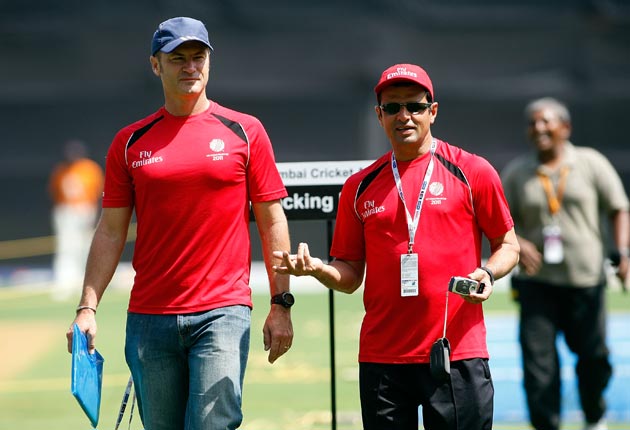The umpires have been spot on – just consult Hawk-Eye
The presence of the outstanding Aleem Dar and Simon Taufel today will reassure the review system's doubters, writes Stephen Brenkley

Something familiar will be missing in the World Cup final today. It is not only Australia, who have been in every final since 1992 and have won the past three. There is also Steve Bucknor, one of the umpires in the previous five finals.
Bucknor's retirement two years ago, has opened the door to a new breed and today, perhaps for the first time, the best four umpires in the world will officiate.
In the middle at the sharp end will be Aleem Dar, of Pakistan, who is umpire of the year for the second successive time, and Simon Taufel, his predecessor for the four years before.
They will be accompanied by Ian Gould as third umpire and Steve Davies as fourth umpire. The match could not be in safer hands. Although Taufel has made a couple of errors in the tournament, Dar's progress has been unblemished. All his decisions have been upheld in the court of the slow-motion replay and all challenges were thrown out.
Dar stood with Bucknor in Barbados four years ago. Taufel deserves his chance. He has been denied previously by Australia's presence, the International Cricket Council deeming it more important to confer neutrality on the event than ability. Neither India nor Sri Lanka are bestowing highly capable umpires on the world at present and it is as well their countries are represented in a playing sense.
This has been the first World Cup of which the umpire decision review system has been a part. While it might be here to stay it has been only a qualified success and most observers are still reeling from an incident in the semi-final.
In the 11th over of India's innings, Gould gave Tendulkar out to a ball from Saeed Ajmal, which tricked the batsman. It looked out at the time and when the replays came up it looked more out still. Gould had made a brave but accurate decision so early in the match.
Then the technology got involved. Tendulkar, hitherto one of the review system's bitterest enemies because he was on the wrong end of it in the early experimental days, asked for it to be reviewed. But he looked consigned to a justified fate. The grey mat showed that the ball had pitched in line and straightened. So far, so Ajmal. Hawk-Eye, the ball tracker, was introduced and, bizarrely, it predicted that the ball would have missed leg stump by two inches.
Hawk-Eye is based on missile technology and many mused that it just went to show why so many civilian buildings were destroyed in combat zones. The BBC cricket correspondent, a long-time opponent of reviews, was apoplectic.
England (remember them) twice benefited from strict review interpretations. Ian Bell, against India, and Ravi Bopara, against Sri Lanka, were both given out leg before. Both were reprieved because although the ball was shown to be hitting the stumps they were more than 2.5m down the pitch, the distance at which the predictive technology is faulty.
Sometime today a player will decide he has been hard done by and from righteousness or desperation will, as they say, go upstairs. These umpires are so proficient that reversal is unlikely but if it is necessary they will not mind.
Join our commenting forum
Join thought-provoking conversations, follow other Independent readers and see their replies
Comments
Bookmark popover
Removed from bookmarks